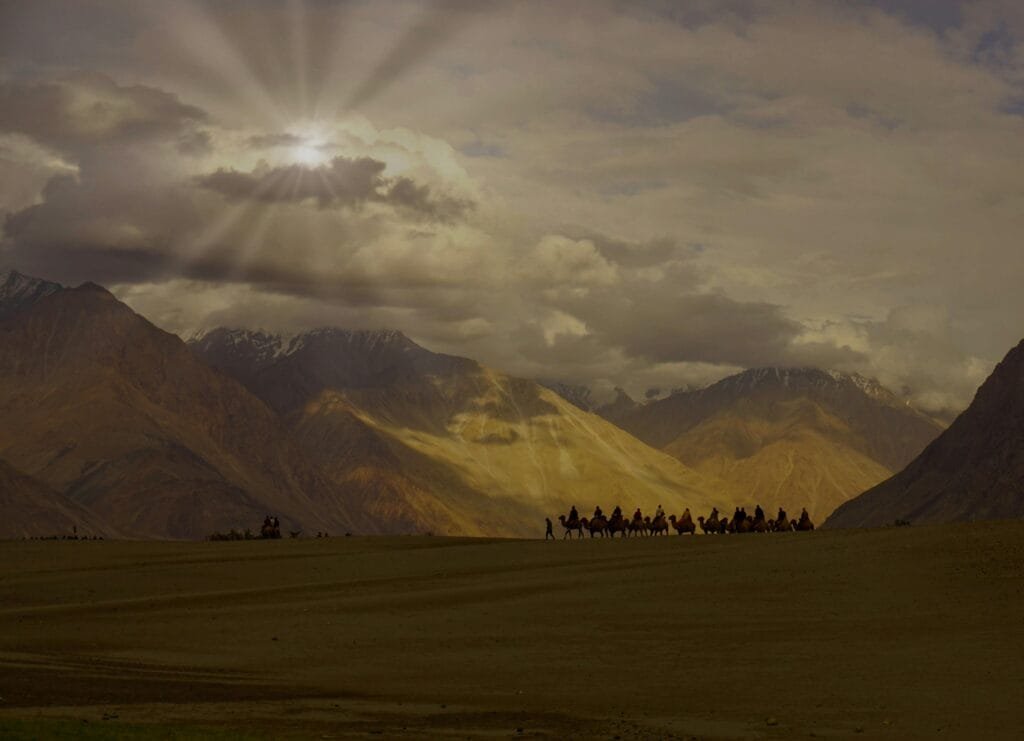CHANGTHANG –
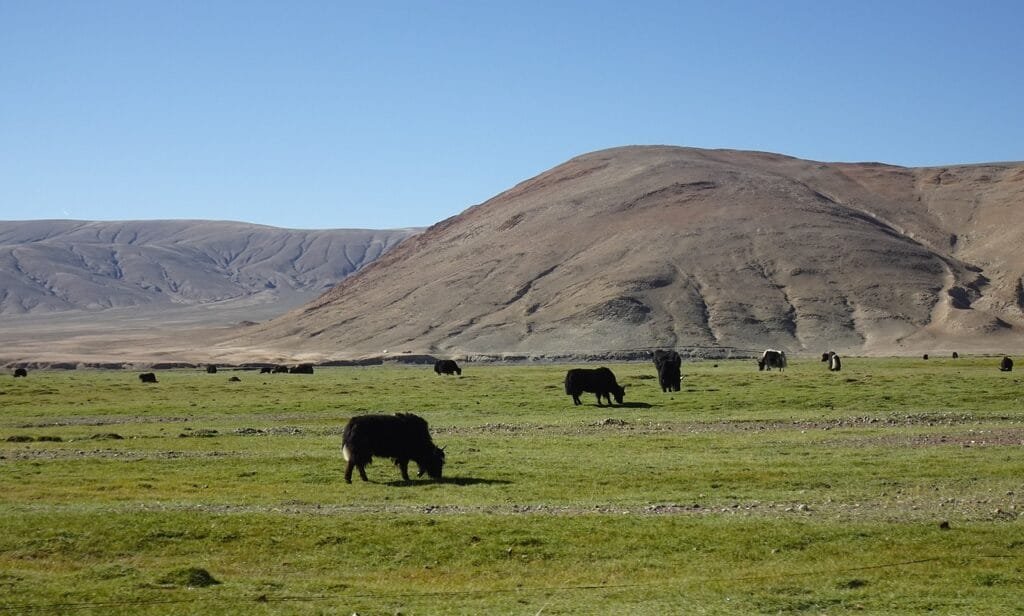
The descendents of Tibetan nomads known as CHANG-PAS, inhabit this part of Ladakh. These people continue to live a nomadic life by wandering along with their livestock. These people normally trade in Pashmina, meat, wool, butter, cheese etc. The Chang-pas live in Yak hair tents which they erect wherever they camp and these tents are know as REBO.
The main attraction of this area is PANGONG, TSOMORIRI & TSOKAR lakes. Pangong,
Tsomoriri and Tsokar all have extremely fragile ecosystems and provide habitants some fragile
species of birds.
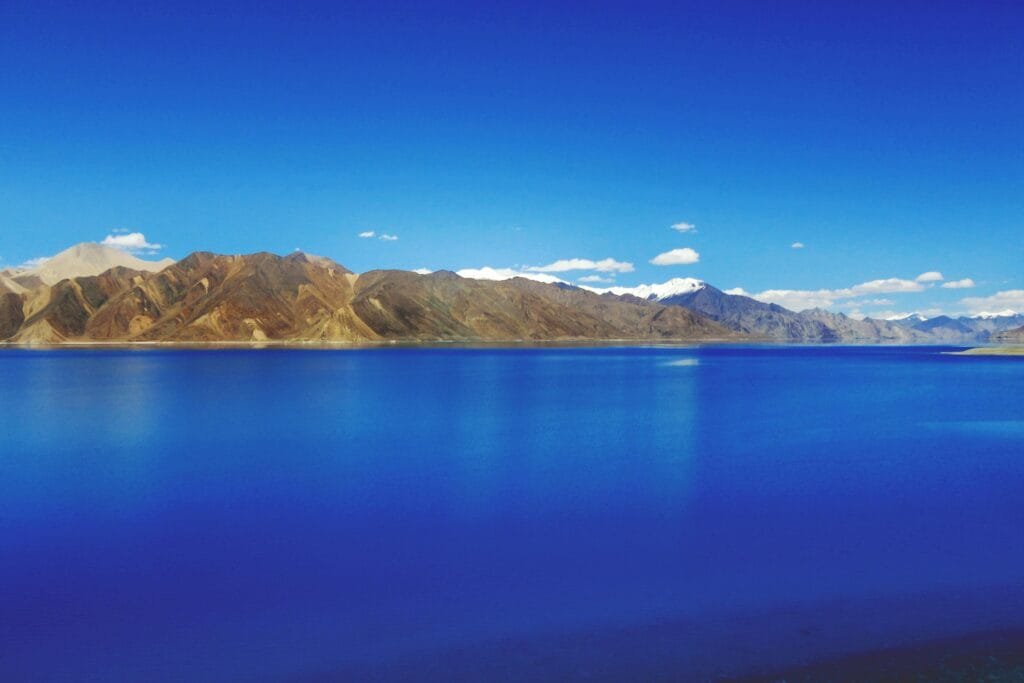
PANGONG lake located at an altitude of around 4200m is a over 140kms. in length and 7kms. at its widest point. SPANGMIK is the furthest point to which the tourists are permitted. It’s around 7kms. along the southern shore from the head from the head of the lake. The lake has no outlet so the water has high salt and mineral content. Because of this the lake cannot support aquatic life, hence it is distinctive. It affords a spectacular view of the mountains of the CHANGCHENMO range to the north. Spangmik and a scattering of other small villages along the lake’s southern shore are the summer homes of a scanty population of Chang-pa, the nomadic herds people of Tibet and south-east Ladakh. The Pangong Chang-pa cultivate sparse crops of barley and peas in summer. It’s in winter that they unfold their REBO (tents) and take their flocks of sheep and Pashmina goats out to distant pastures.
TSOMORIRI & TSOKAR lakes are to the south-east of Leh in Rupshu valley. The true beauty of the region lies in its vast untamed space, wildlife & nomadic inhabitants.
Brackish Tsomoriri lake is surrounded by snow-topped barren mountains. This unique habitant attracts many migratory water birds including brahminy ducks and black-neck cranes and the rare barheaded geese.Tsokar is a salt lake surrounded by white heaps of saline deposits in a vast dusty bowl surrounded by barren mountains. There is a freshwater lake to the south-east of Tsokar called STARTSAPUK Tso and herds of Kiang (Tibetan wild ass) often graze on the plain nearby.
KORZOK, situated at an altitude of around 4500m with its dozen or so houses and its Gompa appearing like a mirage among the barren hills, is the only permanent settlement in Rupshu.
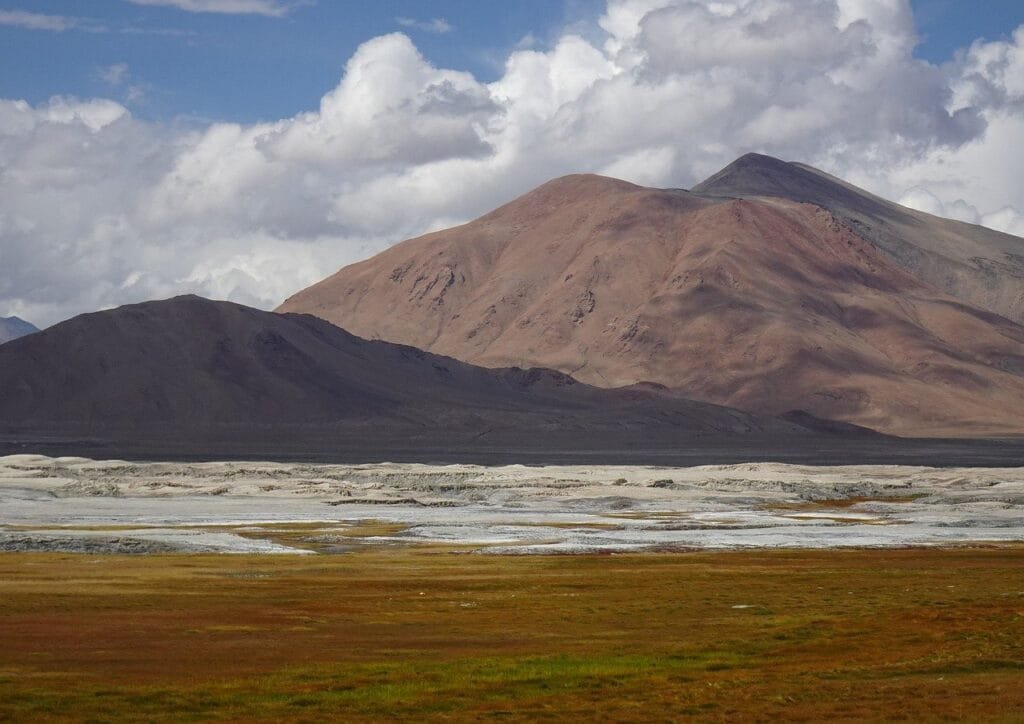
Otherwise the region is inhabited only by nomadic Chang-pa herds people. The few barley fields at Korzok must be among the highest cultivation in the world.
As you navigate the challenging terrain, the wetlands of Tso Moriri reveal themselves, a kaleidoscope of colours amidst the barren surroundings. This is wilderness in its purest form, where only the brave-hearted dare to venture.
NUBRA VALLEY –
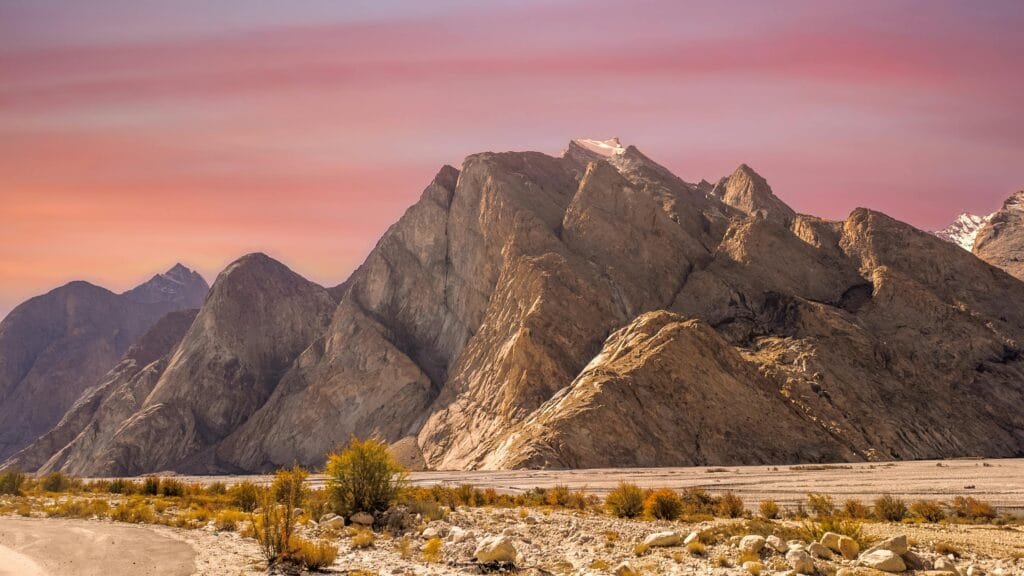
North of Leh and snuggling between the Karakoram and the Ladakh ranges lies Nubra, comprising the Shayok valley and the valley of the Nubra river. The two rivers between them manage to keep the region green with dense sea buckthorn growing in abundance on the slopes. Nubra, which means ‘green’ is the lowest of all the valleys in Ladakh, varying between 3048m at Hundar and 3231m at Panamik. You reach Nubra crossing over KHARDONGLA pass 5600m, considered to be one of the highest motorable pass of the world. Nubra has a number of large settlements besides DISKIT, which is the largest and has a sixteenth century monastery and numerous apricot orchards. HUNDAR is a nice small village around sand dunes and has a small population of Bactrian camels, shaggy double-humped animals. These animals were used as pack animals during the trade days with Central Asia. The villages of TIRIT, SUMUR, PANAMIK proceeds up Nubra river. SAMSTALING monastery is a famous one situated on the mountain side just above Sumur. TURTUK is the last village of Nubra Valley bordering Pakistan. The village was part of Pakistan until 1972.
PANIKHAR. Kargil.
Nestled in the heart of the Himalayas, Panikhar is a serene village situated in the Zanskar region of Ladakh, India. This secluded paradise is famed for it’s breathtaking landscapes that encompass towering mountains, glacial streams, and an ancient cultural heritage. Panikhar serves as the gateway to the Zanskar Valley, which has become a beacon for adventurers and peace seekers alike. This tiny village in the Suru Valley erupts in a riot of green, a stark contrast to its surroundings. The Suru River meanders through lush meadows, creating a scene so picturesque it seems plucked from a fairytale.
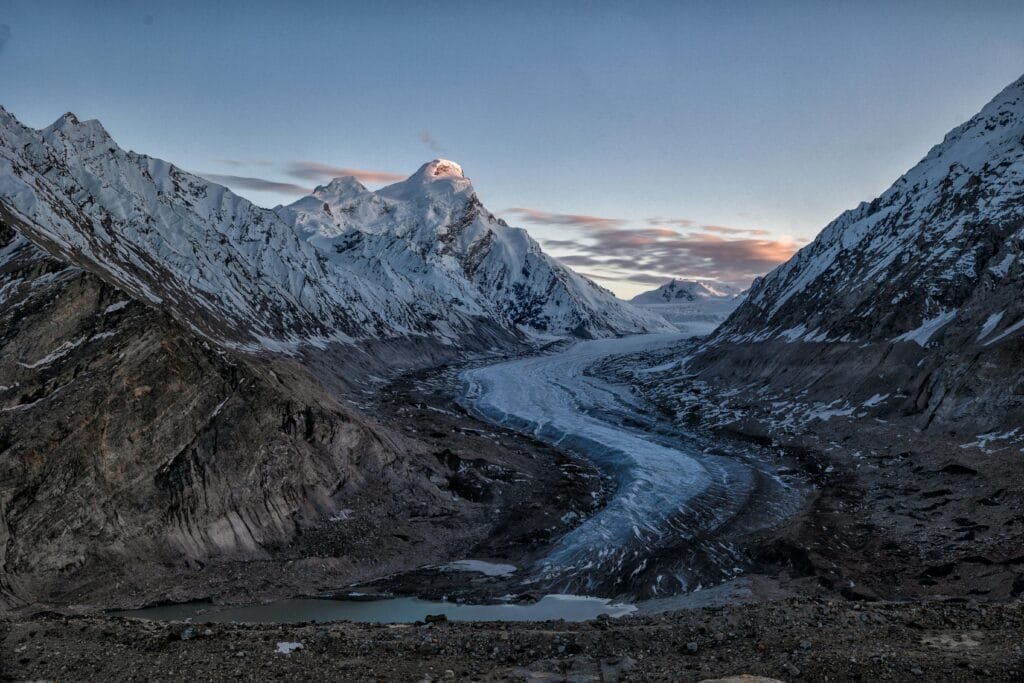
As you wander through the hamlets of Sankoo, Rangdum, and Panikhar, you’ll feel as if you’ve stumbled upon a hidden paradise. It’s a place where time seems to stand still, offering a much-needed respite for weary travellers on their way to the higher reaches of Zanskar.
DHA-HANU:
Along the lower INDUS live a unique group of people know as BROKPA’s. They are fascinating people who are very different from other ladakhis, with their strong ARYAN looks, language and clothings. These people are variously described as descendants of the wandering troops of Alexander of Macedonia, or the direct descendants of a pure Indo-Aryan tribe. The two villages situated in the Dha Hanu valley, also known as Aryan valley, about 163 km northwest of Leh in Ladakh . Being at a lower altitude, Dha and Hanu is warmer than Leh, allowing for the cultivation of wine-grapes and cherries as well as apricots and walnuts They have an Indo-European appearance in contrast to the predominant Tibeto-Mongol inhabitants of most of Ladakh
